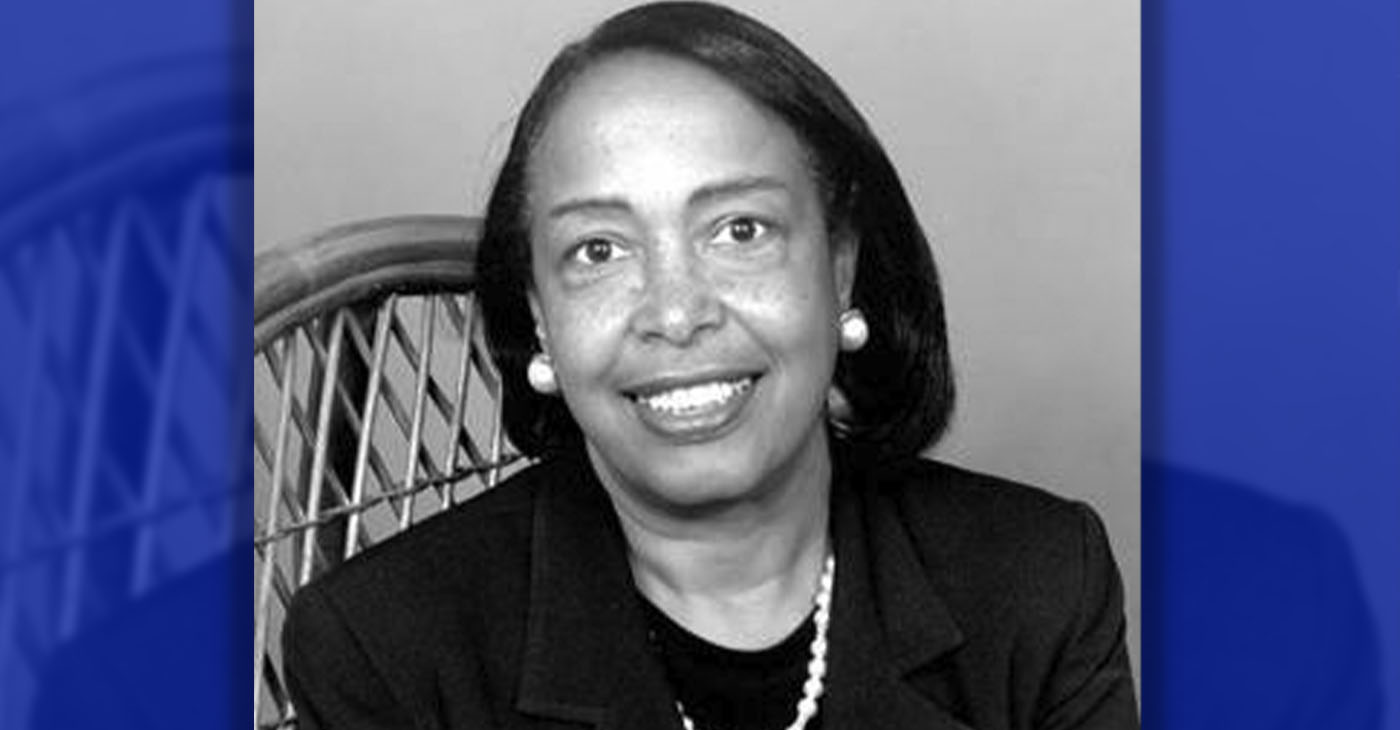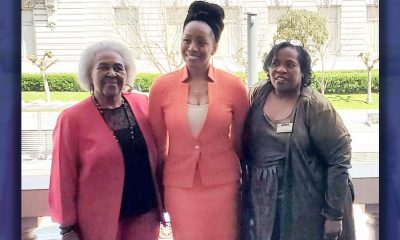Black History
Dr. Patricia Bath: A Legacy of Visionary Achievements
Dr. Patricia Bath, a trailblazer in the field of ophthalmology, etched her name in history as a woman of numerous firsts and groundbreaking achievements.

By Tamara Shiloh
Dr. Patricia Bath, a trailblazer in the field of ophthalmology, etched her name in history as a woman of numerous firsts and groundbreaking achievements.
Born on Nov. 4, 1942, in Harlem, New York City, Bath’s journey began under the guidance of her father, Rupert Bath, the first Black motorman for the NYC subway, and her science-loving mother, Gladys Bath.
From a young age, Bath’s passion for learning and science blossomed. At just 16, she attended a cancer research workshop sponsored by the National Science Foundation, where her discoveries garnered such acclaim that they earned her the prestigious Mademoiselle magazine’s Merit Award in 1960.
Following her remarkable high school graduation in a mere two years, Bath pursued higher education at Hunter College, obtaining her bachelor’s degree in 1964. Subsequently, she enrolled at Howard University for medical studies and graduated with honors in 1968.
An internship at Harlem Hospital and a fellowship in ophthalmology at Columbia University followed, where she discovered alarming disparities in eye care between African Americans and other patients.
In 1973, Dr. Bath shattered barriers by becoming the first African American to complete an ophthalmology residency. She later ventured to California, holding an assistant professorship in surgery at Charles R. Drew University and the University of California, Los Angeles. Notably, in 1975, she became the first woman to join the faculty of UCLA’s Jules Stein Eye Institute.
Recognizing the urgent need for eye care accessibility, Dr. Bath co-founded the American Institute for the Prevention of Blindness in 1976, asserting that “eyesight is a basic human right.” Her efforts extended further as she chaired the Ophthalmology Residency Training program at UCLA-Drew in 1983, another pioneering feat as the first woman to hold such a position.
However, Bath’s most influential innovation emerged in 1986 — the Laserphaco Probe.
This revolutionary device harnessed laser technology to offer a more precise and less painful treatment for cataracts, restoring sight to individuals who had suffered blindness for decades.
Her remarkable achievement led to a patent grant in 1988, making her the first African American female doctor to receive a medical patent, not just in the United States, but also in Japan, Canada, and Europe.
In 1993, Dr. Bath retired from UCLA Medical Center and received the esteemed title of “Howard University Pioneer in Academic Medicine.” Her enduring legacy continues to inspire generations of aspiring medical professionals, especially women and people of color, to break barriers and leave an indelible mark on the world of medicine.
On May 30, 2019, the world mourned the loss of this remarkable visionary as she passed away in San Francisco. Yet, her legacy remains a beacon of hope and progress, illuminating the path for future pioneers to follow in her footsteps and shape a more equitable and vibrant world.
Activism
Oakland Post: Week of April 24 – 30, 2024
The printed Weekly Edition of the Oakland Post: Week of April 24 – 30, 2024

To enlarge your view of this issue, use the slider, magnifying glass icon or full page icon in the lower right corner of the browser window. ![]()
Activism
Oakland Post: Week of April 17 – 23, 2024
The printed Weekly Edition of the Oakland Post: Week of April 17 – 23, 2024

To enlarge your view of this issue, use the slider, magnifying glass icon or full page icon in the lower right corner of the browser window. ![]()
Black History
Matthew Henson: Explorer Extraordinaire
Matthew Henson, a trailblazing explorer who overcame countless obstacles to leave an incredible mark on history. Born on August 8, 1866, in Charles County, Maryland, his journey is a testament to the power of determination and the spirit of adventure.

By Tamara Shiloh
Matthew Henson, a trailblazing explorer who overcame countless obstacles to leave an incredible mark on history. Born on August 8, 1866, in Charles County, Maryland, his journey is a testament to the power of determination and the spirit of adventure.
Henson’s life began amidst the backdrop of post-Civil War America, where opportunities for African Americans were scarce. From a young age, he possessed an insatiable curiosity about the world beyond his small town. At the age of 12, he embarked on a journey that would change the course of his life forever when he joined a merchant ship as a cabin boy.
His most famous expedition was his journey to the Arctic with renowned explorer Robert E. Peary. In 1887, Henson joined Peary’s crew as a seaman and quickly proved himself to be invaluable with his skills as a navigator and craftsman. Over the course of several expeditions, Matthew endured extreme cold, treacherous terrain, and grueling conditions as he and Peary sought to reach the elusive North Pole.
In 1908–09, Peary set out on his eighth attempt to reach the North Pole. It was a big expedition, with Peary planning to leave supplies along the way. When he and Henson boarded their ship, the Roosevelt, leaving Greenland on August 18, 1909, they were joined by a large group. This included 22 Inuit men, 17 Inuit women, 10 children, 246 dogs, 70 tons of whale meat, blubber from 50 walruses, hunting gear, and tons of coal.
In February, Henson and Peary left their anchored ship at Ellesmere Island’s Cape Sheridan, along with the Inuit men and 130 dogs. They worked together to set up a trail and supplies along the way to the Pole.
Peary picked Henson and four Inuit people to join him in the final push to the Pole. However, before they reached their destination, Peary couldn’t walk anymore and had to ride in a dog sled. He sent Henson ahead to scout the way. In a later interview with a newspaper, Henson recalled being in the lead and realizing they had gone too far. The group turned back, and Henson noticed his footprints helped guide them to their destination. At that location, Henson planted the American flag.
Henson’s legacy extends far beyond his expeditions to the Arctic. He shattered racial barriers in the world of exploration and inspired countless individuals, regardless of race, to dream big and pursue their passions. In 1937, he was finally recognized for his achievements when he was inducted into The Explorers Club, an organization dedicated to promoting scientific exploration and field research.
Matthew Henson died in the Bronx, New York, on March 9, 1955, at the age of 88.
-

 Activism4 weeks ago
Activism4 weeks agoOakland Post: Week of March 27 – April 2, 2024
-

 #NNPA BlackPress4 weeks ago
#NNPA BlackPress4 weeks agoBeloved Actor and Activist Louis Cameron Gossett Jr. Dies at 87
-

 Community1 week ago
Community1 week agoFinancial Assistance Bill for Descendants of Enslaved Persons to Help Them Purchase, Own, or Maintain a Home
-

 Activism3 weeks ago
Activism3 weeks agoOakland Post: Week of April 3 – 6, 2024
-

 Business2 weeks ago
Business2 weeks agoV.P. Kamala Harris: Americans With Criminal Records Will Soon Be Eligible for SBA Loans
-

 Activism2 weeks ago
Activism2 weeks agoOakland Post: Week of April 10 – 16, 2024
-

 Community2 weeks ago
Community2 weeks agoAG Bonta Says Oakland School Leaders Should Comply with State Laws to Avoid ‘Disparate Harm’ When Closing or Merging Schools
-

 Community1 week ago
Community1 week agoOakland WNBA Player to be Inducted Into Hall of Fame




















































